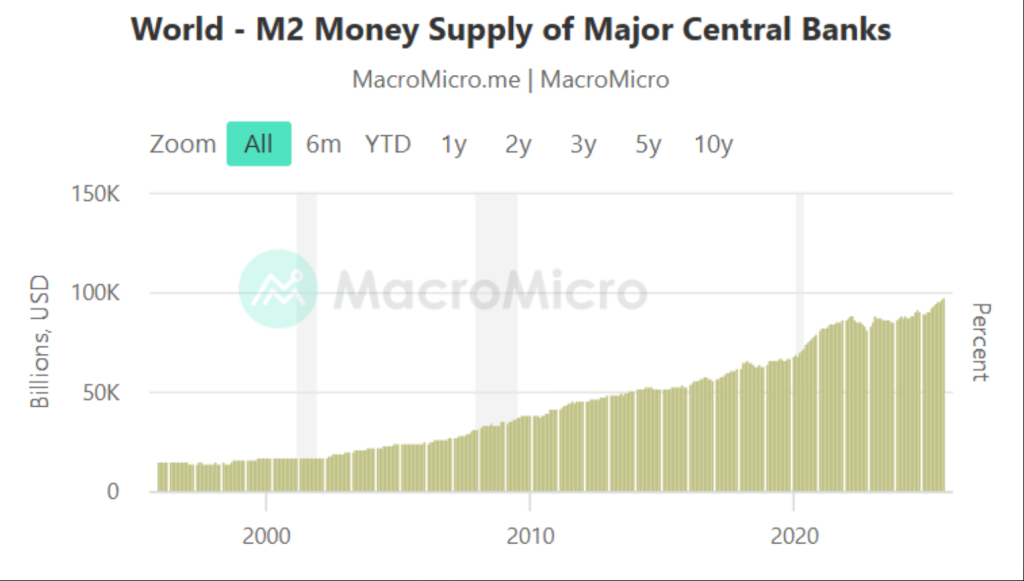Where Will the Next Global Financial Crisis Come From?
As the world grapples with growing economic uncertainty, the question of where the next global financial crisis will come from looms larger than ever. While some analysts point to the volatility of the crypto market, others warn about an unsustainable real estate bubble, rampant money printing by central banks, and the unpredictable prices of gold and silver. Understanding these interlinked risks could help investors and policymakers prepare for the next global downturn.
The Crypto Market: A Volatile Catalyst
The cryptocurrency market remains one of the most unpredictable and speculative areas of global finance. Digital assets like Bitcoin and Ethereum have experienced massive price fluctuations, wiping out billions in market value in mere days. As institutional investors increasingly enter this space, the potential for systemic contagion grows. If a major stablecoin collapses or a leading crypto exchange faces insolvency, shockwaves could ripple through the entire financial system.
Moreover, the integration of crypto-backed loans, derivatives, and decentralized finance (DeFi) products into traditional markets introduces new layers of risk. While some see digital assets as a hedge against inflation, others fear they could amplify financial instability when confidence falters.
The Real Estate Bubble: Rising Prices, Rising Risks
Global property markets have seen record growth over the past decade. Ultra-low interest rates and cheap credit encouraged both homeowners and investors to buy aggressively, driving prices to unprecedented levels. In cities like London, New York, Sydney, and Toronto, property prices have become detached from household incomes — a classic warning sign of a real estate bubble.
As central banks raise interest rates to fight inflation, mortgage payments rise, and affordability collapses. A sharp downturn in real estate values could trigger widespread defaults, bank losses, and consumer confidence shocks — much like the 2008 financial crisis. Real estate has long been seen as a stable asset, but when valuations exceed fundamentals, corrections can be both deep and painful.
Money Printing: The Invisible Fuel Behind the Bubble

Since the 2008 crisis — and particularly during the COVID-19 pandemic — central banks have printed unprecedented amounts of money to stabilize economies. Quantitative easing and fiscal stimulus packages injected trillions of dollars into global markets. While this helped prevent immediate collapse, it also led to asset inflation — boosting stocks, real estate, and crypto prices far beyond their intrinsic value.
Excessive money printing erodes the purchasing power of currencies and undermines trust in fiat systems. Inflation, which was once considered “transitory,” has proven stubborn. As policymakers struggle to strike a balance between growth and stability, the risk of policy missteps increases. A sudden tightening of liquidity — or the realization that printed money can’t fix structural inefficiencies — could trigger a cascading global recession.
Gold and Silver Prices: The Canary in the Coal Mine
For centuries, gold and silver have acted as safe-haven assets during times of crisis. Their prices often rise when investors lose confidence in fiat currencies or financial markets. The recent upward trends in both metals reflect mounting concerns about inflation, currency devaluation, and geopolitical instability.
Gold hovering near record highs signals deep-seated anxiety among investors. Silver, while more volatile, often mirrors industrial and monetary shifts. If both continue to climb sharply, it could indicate that institutional money is seeking refuge from a weakening global economy. Historically, surges in precious metal prices have preceded or accompanied major financial downturns.
Interconnected Markets: A Fragile Web
One of the most concerning aspects of today’s economy is the interconnectivity between markets. Cryptocurrencies are now traded through major financial institutions; property investments are bundled into complex derivatives; and printed money flows across borders at lightning speed. A crisis in one area — such as a crypto collapse or real estate correction — could rapidly spread through banking, currency, and commodity markets.
This global interdependence means that no sector exists in isolation. Even small shocks can trigger disproportionate chain reactions, amplified by algorithmic trading, margin debt, and speculative leverage. As history shows, financial crises often start where confidence is most overextended — and spread where least expected.
Are Central Banks Ready?
Central banks worldwide face a delicate balancing act. They must curb inflation without crushing growth, tighten liquidity without triggering defaults, and restore faith in fiat money amid rising public skepticism. If monetary tightening continues too aggressively, debt-laden economies could face stagflation — low growth combined with high inflation — a dangerous mix last seen in the 1970s.
Meanwhile, emerging markets burdened by dollar-denominated debt are especially vulnerable. As the U.S. dollar strengthens, their repayment costs soar, increasing the likelihood of sovereign defaults and capital flight. History has shown that global crises often begin at the periphery — before spreading to the core economies.
Conclusion: The Next Crisis May Not Look Like the Last One
The next financial crisis could emerge from multiple fronts: a crypto market implosion, a real estate correction, the long-term consequences of money printing, or the soaring prices of gold and silver signaling lost confidence in fiat systems. Yet unlike 2008, this time the risks are simultaneous and interconnected, making containment far more difficult.
Investors, policymakers, and everyday citizens must stay alert. Diversification, risk awareness, and prudent fiscal policy are more critical than ever. Whether the spark comes from Wall Street, Shanghai, or the blockchain, the next global financial crisis will test not just markets — but the very foundations of our economic system.
Want to make an even more informed decision? Be sure to check out our other buying guides. We provide in-depth analysis and comparisons on a wide range of products, ensuring you always get the best value and performance.